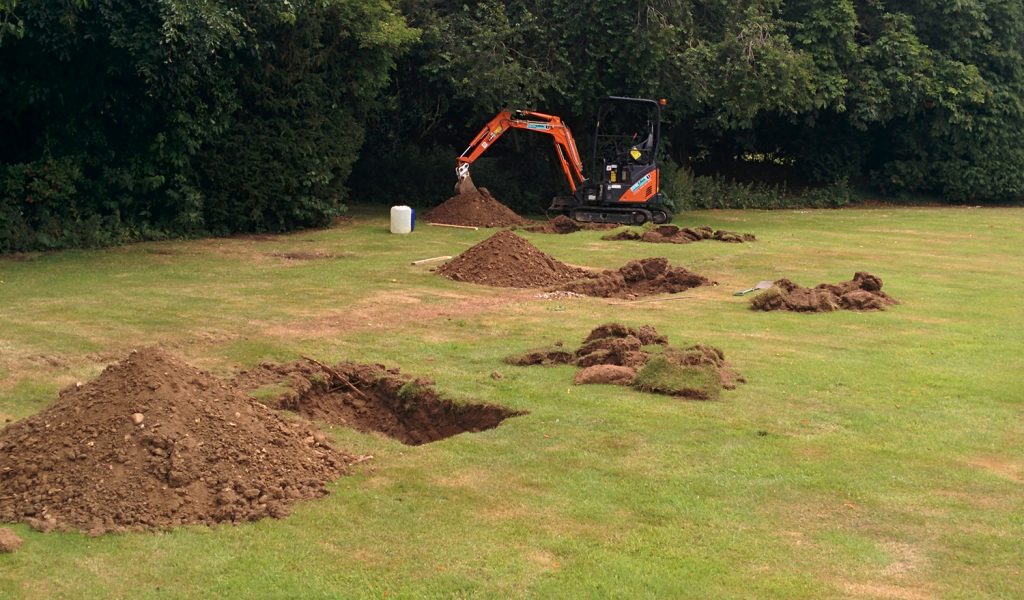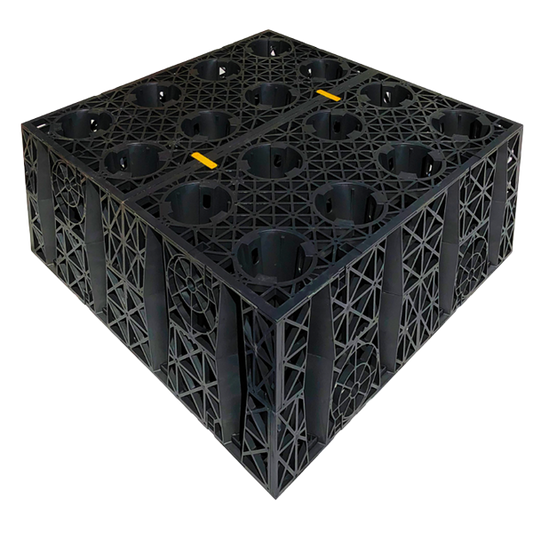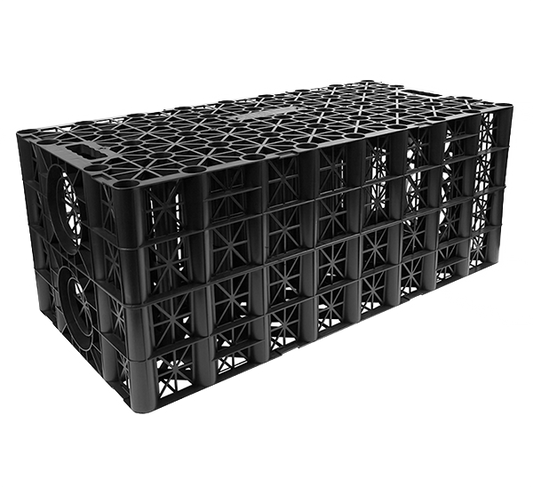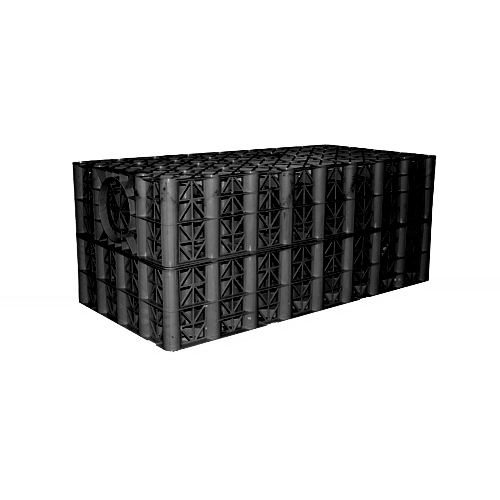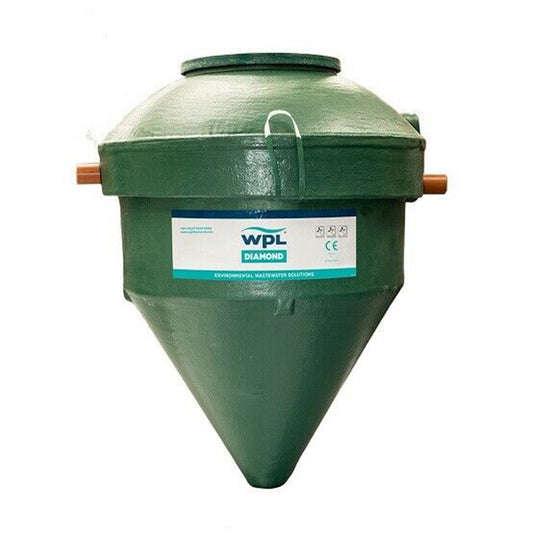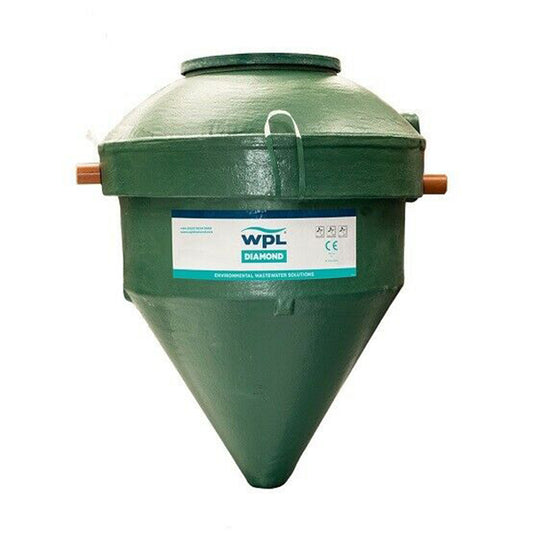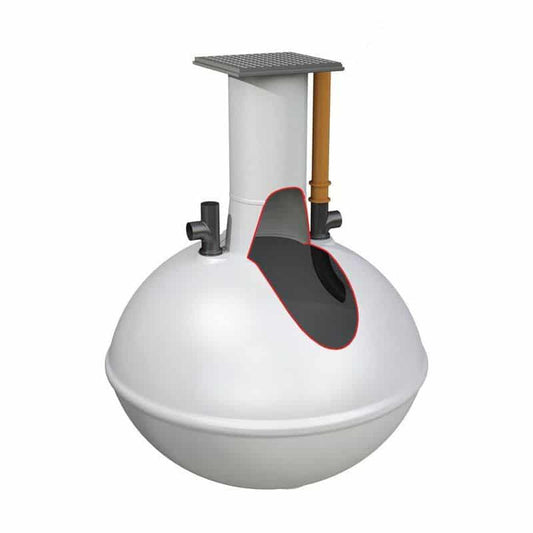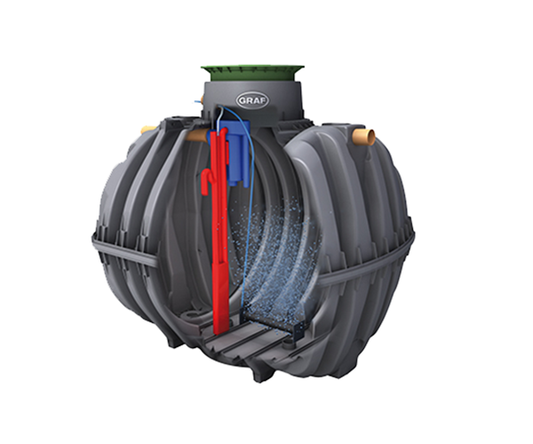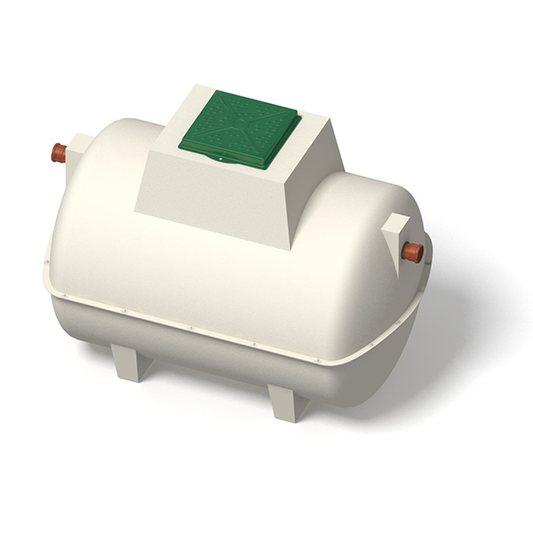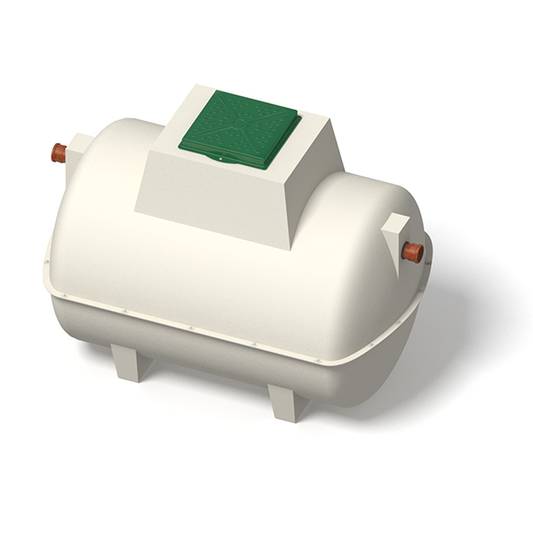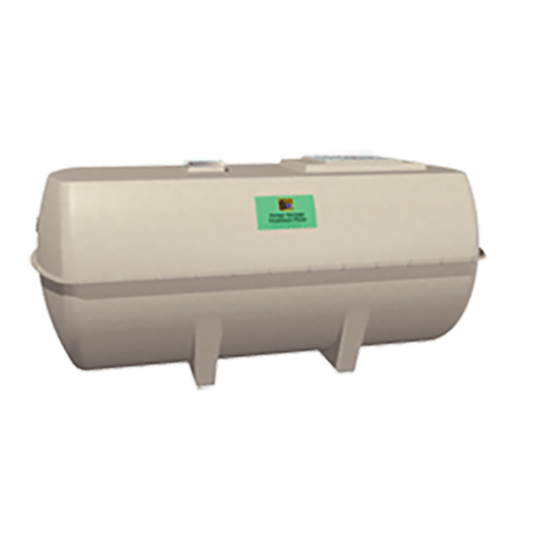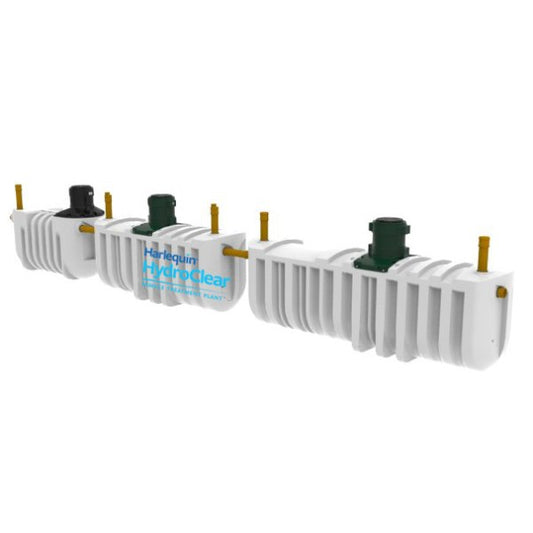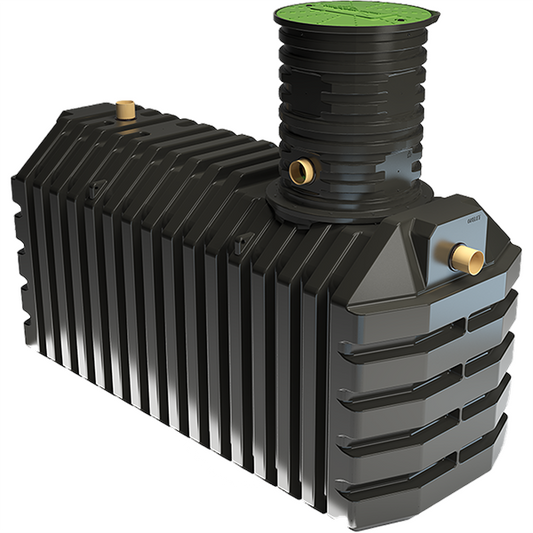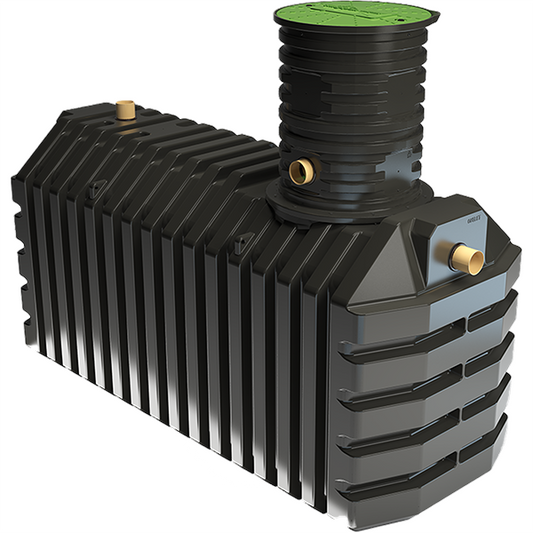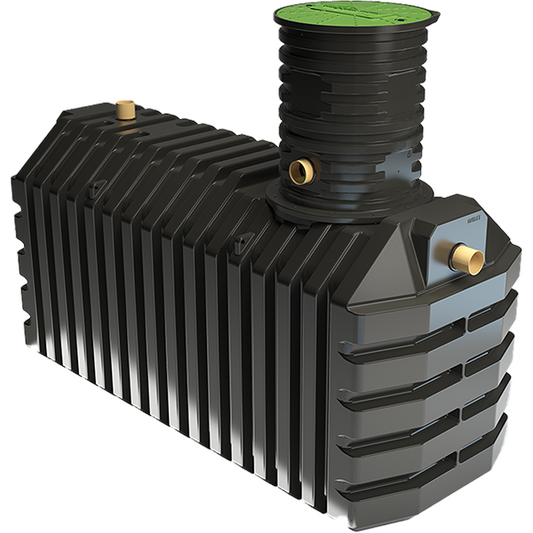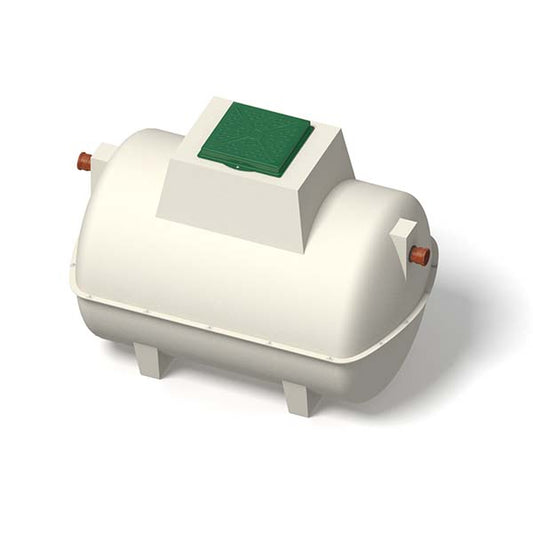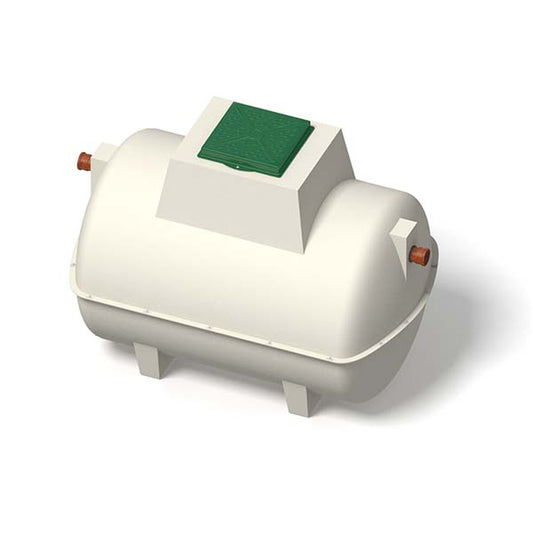When deciding whether you need to install a soakaway for your septic tank, sewage treatment or soakaway crates system, you will need to undertake a percolation test.
What is a percolation test?
A percolation test is the last of three mandatory tests used to determine if a new or replacement soakaway can be installed. You will first need to undertake a Groundwater Source Protection Zone search and a Trial Site Assessment Hole to assess the water table in your area fully.
The percolation test measures how quickly water drains away from the soil. Different soil types will produce a variety of results. For example, fine sandy soil will drain water away significantly faster than thick clay soil.
The testing process is fairly simple. It involves digging a pit to specific dimensions, filling it with water, and then timing how long the water takes to soak into the soil.
What will the results of the percolation test determine?
The results of the percolation test will determine how large your soakaway will need to be as well as if you can even install one. The results of this test can also be used to determine the required size of a drainage field.
The results can also be used to demonstrate to your local authority that you have carried out the test correctly. To support this we advise you take time-stamped photos of each of the steps, as described below.
What are soakaways?
There are two general types of soakaway:
- Foul water soakaway – These are used when septic tanks and sewage treatment plants are in place. This must be done using perforated BS-EN1401 underground sewer pipe, bedded on gravel (20mm clean gravel is usually used).
- Surface water soakaway – These have to handle larger volumes of water in a short period of time. Soakaway crates are the favourable option, compared to a hole filled with rubble This method is not allowed for septic tanks and sewage treatment plant soakways. They are only for rainwater and surface water soakaways.
A relatively large amount of space is required for a soakaway to be considered. The soakaway must be a minimum of 5m away from your building, 5m away from a road and 2.5m away from any boundary.
What are the steps of the percolation test?
Here are the steps required for undertaking a percolation test for foul water soakaways:
- Excavate a hole – Dig a hole 300mm square to a depth of at least 300mm below the proposed invert, spacing them along the proposed line of the where the soakaway would be. While digging the hole, look out for changes in soil characteristics at different depths.
- Saturate the local soil – Fill each hole with a depth of at least 300mm.
- If the water drains rapidly – If it drains within 10 minutes, the hole should be refilled up to 10 times. If the water continues to drain away then this soil is unsuitable for a soakaway. And if it hasn’t soaked away within 6 hours it is also not suitable.
- Determine the percolation rate – Refill the test holes with water to a depth of at least 300mm and then using a stopwatch see the time, in seconds, for the water to seep away from 75% to 25% full level. Download our Percolation Test Results sheet to record your findings.
- Divide this time – Divide the time by 150. The answer gives the average time in seconds (V) required for the water to drop 1mm.
- Repeat this test – Repeat the test 3 times for each hole at different times in the day. The average figure from the tests should be taken by adding all the results together and then divided by the number of holes, giving us the Vp.
- If results vary – Where the Vp results vary widely, make further tests on a minimum of three different locations in the proposed area for a soakaway.
If the test results show an average Vp value of between 15 and 100 then the ground is suitable for a soakaway. The minimum of 15 ensures that untreated effluent cannot percolate too rapidly into the ground resulting in polluting the groundwater. If the Vp is above 100, effective treatment is unlikely due to inefficient soakage leading to wastewater pounding on the land surface.
Please note:
When performing a percolation test the weather conditions must be right. Severe or abnormal weather conditions such as heavy rain or frozen ground or a draught will lead to inaccurate results due to the changed water table.
See our video on how to carry out a percolation test
Watch our video on the different steps involved in carrying out a percolation test.
How to perform the percolation test calculation?
The calculations are slightly different for sewage treatment plants and septic tanks, as shown below.
Sewage treatment plants: Area (A) = V X P X 0.20
Septic tanks: Area (A) = V X P X 0.25
Code:
V = The amount of time in seconds for the water in the test hole to drop by 1mm
P = The maximum number of persons that the tank or plant is designed to serve
Useful downloads:
Download our useful guides here:
- Percolation Test Method – Use this document to guide you through the different steps you will need to undertake to perform your percolation test
- Percolation Test Results Sheet – Use this template to record your percolation test results
At Cotterill Civils we provide a range of septic tank, sewage treatment and soakaway crate systems to suit your needs. For expert advice, call us on 0121 351 3230. Alternatively, fill out our enquiry form:
Frequently Asked Questions
What weather is suitable for performing percolation tests?
When carrying out a percolation test, ensure weather conditions are calm for accurate results.
Avoid performing the test in the following conditions:
· Heavy rain
· Frost
· Snow
· Drought
Inaccurate readings can occur when carrying out tests in these conditions, resulting in installing a soakaway in unsuitable ground.
For example, during a drought, you may record a Percolation Value (Vp) below 100 when it's typically higher.
This number is relative to the unusual dryness of the ground - it, therefore, is not an accurate reflection of normal ground conditions.
A soakaway isn’t suitable for installation where the Vp is above 100 as the ground can’t absorb stormwater quickly enough, causing flooding.
Do I need to install a soakaway alongside my septic tank?
Yes – this is known as a foul water soakaway. Foul water soakaways are used to drain wastewater that has been treated in a sewage treatment system or septic tank.
Without a safe drainage system in place, the following problems can occur:
· Backed-up wastewater can block your tank back up into your sinks
· Water pooling around your tank, which can cause unstable ground and looks unsightly
· Slow-draining sinks, baths, and basins
Maintaining your foul water soakaway
To drain efficiently, your soakaway must be cared for and protected. Do the following to ensure your foul water soakaway functions correctly:
· Flush water from your home sporadically – this prevents your soakaway backing up
· Before installing your tank, perform a percolation test to determine whether the soil can effectively drain treated water
· Avoid planting your soakaway near trees - their roots can dislodge the system
· Only flush natural waste – this prevents blockages in your soakaway and waterlogging
Will a percolation test determine the size of my soakaway?
Yes – a percolation test is necessary when determining the size of your soakaway.
Performing a percolation test will determine if the ground is suitable to place a septic tank and how large your soakaway should be. Unsuitable grounds include:
· Soil that drains water away slowly
· Soil that drains water too quickly
· Soil that can become waterlogged
So, how do you size up your soakaway?
The result of your percolation test determines how large your soakaway should be. The better the results, the smaller the soakaway.
A good range is between 15 and 100. However, the closer you are to 100, the bigger the soakaway you’ll need because drainage is happening slower.
You can work out the size in m2 required to install a soakaway using this calculation:
Area = Vp X P X 0.25
P - the maximum number of occupants the tank will serve.
Your soakaway will have to be longer depending on the number of household occupants, as there will be more water to filter.
What is a healthy percolation test result?
A positive percolation test result is one where the Vp number averages between 15 and 100. You can install a soakaway if your test returns a good result.
What’s a Vp number?
The Vp value is the speed at which water percolates through the soil, determining if the ground is suitable for a soakaway.
Any value surpassing the maximum value of 100 means that wastewater will fail to drain away quickly enough. Slow-draining water pools above the surface, which is unsightly and may cause damage to lawns.
On the other hand, a value lower than 15 means that water will drain far too quickly, polluting the ground with effluent.
Be sure to determine the Vp value of the ground you plan to position your septic tank. Not doing so could result in destructive consequences for your tank and land.





